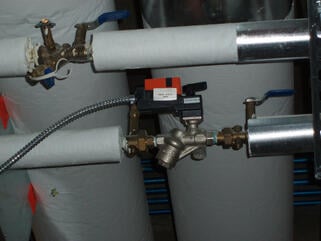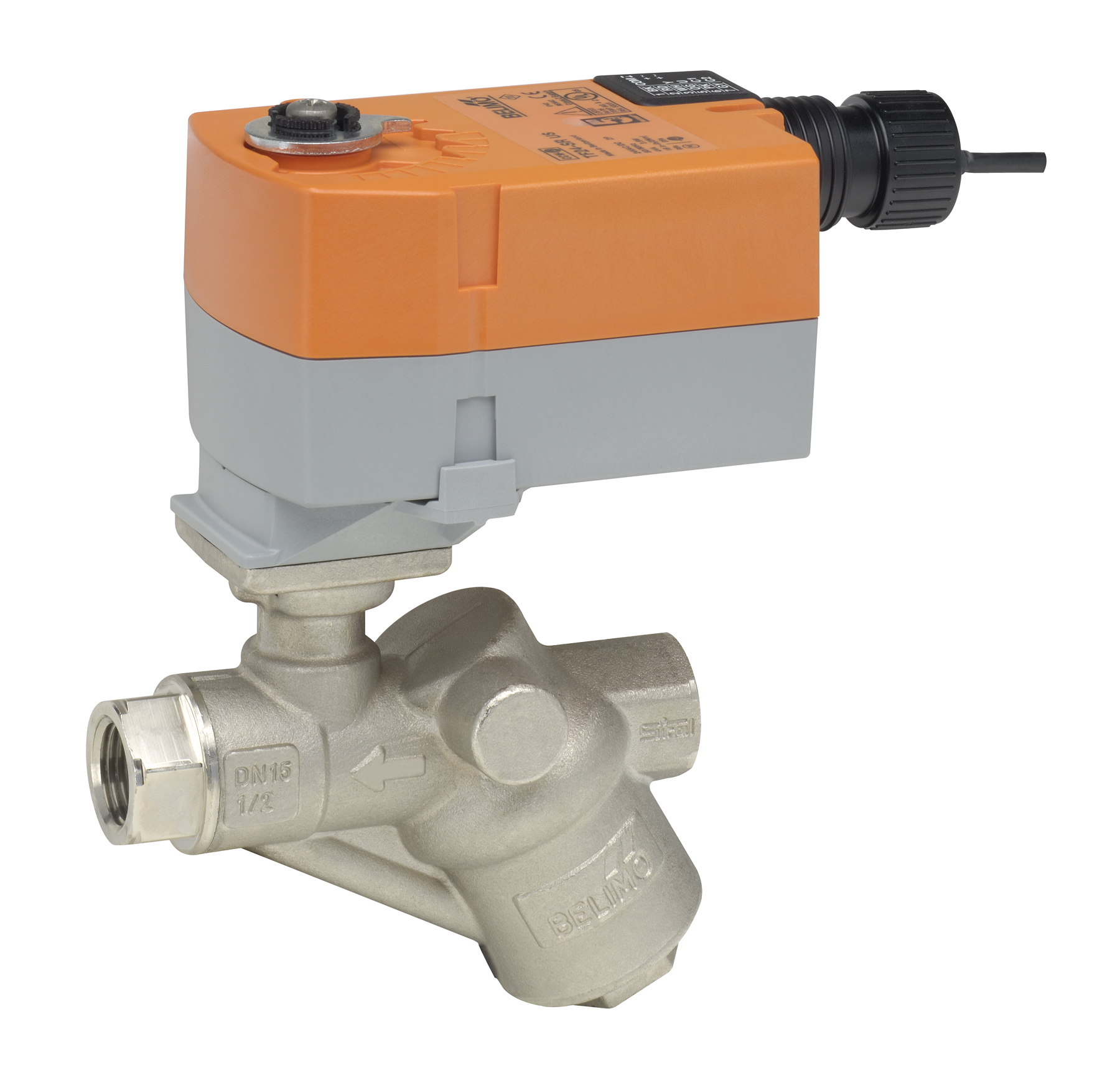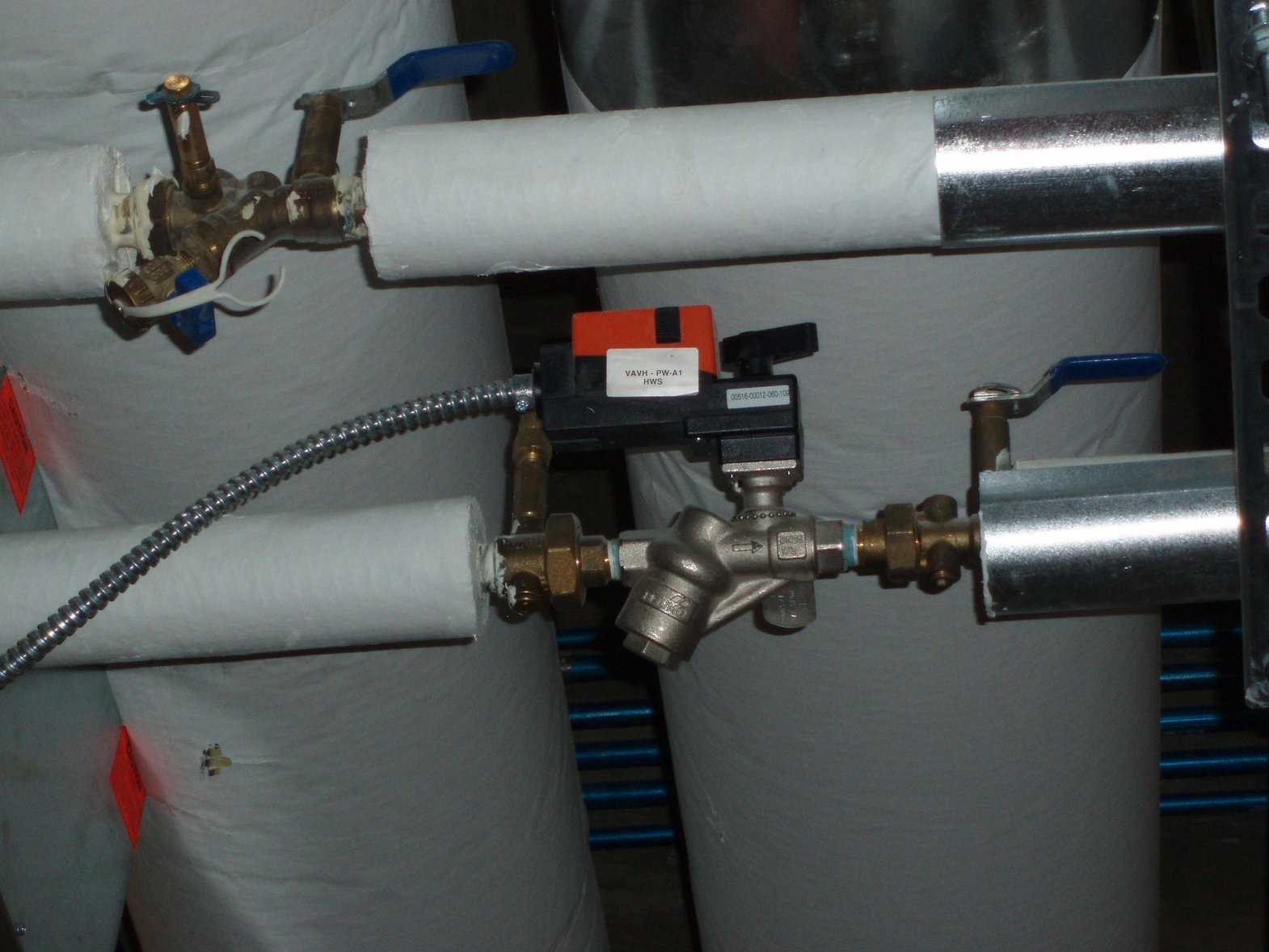Pressure Independent Valves Simplifies Balancing and Saves Energy
In HVAC plants, water distribution can be accomplished at constant or variable flow. Each type of distribution system has advantages and disadvantages. Today variable flow systems using electronic 2-way control valves became generally accepted as the industry standard due to their benefits. The main reason for becoming the industry standard is reduced pumping cost, which is a result of pump head and flow. Meaning, the more control valves are closing, the lower the total flow. Another reason is that the plant can be designed with a diversity factor because flow is only needed where energy is demanded. Besides these advantages there are disadvantages in today’s variable flow systems.
Disadvantages of Today’s Systems:
Time Consuming Balancing
According to its flow design each control valve requires a balancing valve to adjust the hydronic circuit. The balancing procedure dictates the quality of the system and requires highly skilled technicians and tools. During the balancing all control valves must be in their open position. However, as soon as the system is running, depending on different cooling or heating load requirements in the building, valves are permanently closing and opening which results in a dynamic system pressure. Balancing variable flow systems is time consuming and can be conducted only under “static” design conditions.
Rebalancing Required
In a conventional system, if terminals are added the whole system needs to be rebalanced because some existing terminals must be throttled back.
Or imagine a 10-story-building where every 2 months one floor is being remodeled in which balancing of the whole system is required after finishing each floor. Of course this applies also to buildings with changing tenants or new utilization of spaces.
Poor Valve Authority
Only 1% of the time is a building typically running under design conditions. The other 99% the hydronic system needs to provide an average load of 50%. Thus flow is reduced to 20% and differential pressures across control valves increase. Since the CV-rating of the valve was sized for design conditions, the valve authority decreases and the modulating valve is downgraded to one acting open or close only. This makes hunting expected.
Potential Spreading of Control Problems
Control circuits are interactive. Therefore when one control valve closes, the differential pressure on other circuits increase and the associated control valves must close to compensate. So when one or more loops are instable, control problems can spread to other control valves.
Low ΔT
If flow is higher than required, ΔT will decrease and result in a cooling plant with lower return temperatures to the chiller and reduce the efficiency. If a chiller cannot run at peak efficiency it is more likely that the next chiller in a series will be forced to start sooner than required causing additional electricity and maintenance costs.
The opposite happens in a condensing boiler where a higher return temperature can avoid the condensing process when the dew point of the exhaust gases cannot be achieved.
The same phenomenon can happen in coils. In a heating coil for instance, overflow will result in a lower ΔT and decrease the coil’s performance which can result in discomfort due too a low room temperature.
Solution:
The Pressure Independent Characterized Control Valve (PICCV), is based on the proven Characterized Control Valve, CCV, technology. In many tests and surveys the CCV has outperformed globe valves due to a true equal-percentage valve characteristic and higher close-off ratings.
In a PICCV the CCV is combined with a differential pressure regulator. This regulator maintains a constant flow passing through the valve regardless of pressure variations in the system. The flow is held constant, but independent on the degree of ball opening. This is the most important at part-load; for instance when a PICCV with a nominal flow of 10 GPM operates at 3 GPM, a flow of 3 GPM is maintained.
The PICCV is available in the flow range from 0.5 to 60 GPM (1/2” to 2”) and a pressure operating range from 0 to 50 PSI.
Advantages of the PICCV:
Easy Selection
There is no CV calculation required and after the flow calculation the appropriate valve can be selected. If the flow is 8.7 GPM the correct selection is a 9.0 GPM valve. Generally the next bigger valve should be selected. However, an adjustment in the field is always possible considering the adjustable flow range.
Hydronic Balancing Simplified.
Pressure Independent Control Valves make circuits independent and they literally decouple circuits or terminals from the system. There is no balancing procedure required and for commissioning, a simple check of ΔT or flow is enough.
To measure flow, PICCVs are available with pressure ports to gage pressure differential. A valve specific chart may then be used to locate the matching flow from the gage pressure differential.
Flexible Commissioning
Plants can be commissioned in a step-by-step approach. Individual zones can be setup and no rebalancing is required which simplifies adding to the system or remodeling.
One Piece Installation
The compact pressure independent valve incorporates the control valve and the balancing valve. Thus, the valve saves 50% of labor costs during installation and investment for the balancing valve. Additionally about 2/3 of the installation space (pipe length) is saved.
Reduces Pumping Costs
The PICCV assures that each terminal, depending on its load, obtains the required flow and that overflow can be prevented. Therefore, the total flow will be lower than in systems without pressure independent valves. The pump head follows a similar behavior and thanks to the automatic dynamic balancing the required pump head is substantial lower. The maximum required pressure across a PICCV is 3 to 5 PSI, compared to a control valve and a balancing valve where the minimum pressure drop with the balancing valve fully open is approximately 5 PSI (4 PSI control valve, 1 PSI balancing valve). However, depending on the systems dynamic as soon as the balancing valve is throttled back the pressure drop for instance may increase up to 20 PSI.
Maintains ΔT
Pressure independent valves are ensured to have the designed flow for full or part load situations. Therefore, the calculated ΔT will be accomplished which will then lead to higher efficiency of chillers, condensing boilers, coils or heat exchangers.
Visualizes Flow
In a VAV-plant the flow can be shown on the control system’s display due to the feedback signal of the actuator being interpreted to actual flow and in combination with
supply and return temperatures even the actual energy consumption is available. The control system’s display allows faster system diagnosis for the building manager.
Prevents Overflow or Underflow
At morning start-up in a plant most control valves will drive fully open. In a conventional plant overflows have been experienced and less favored terminals do not receive enough flow, which increases the time by which all rooms achieve their setpoint.
With the PICCV, each terminal is receiving a proportional flow and the start-up procedure is parallel. The PICCV can save up to 2 hours of start-up time every day and can reduce energy costs by 4 to 6% in a cooling plant.
In summary, all of these benefits create different values to the involved parties while building a new HVAC-plant or retrofitting.
Planner/Consultant
The PICCV offers new applications and possibilities for the HVAC-Planner. For the first time in the history of HVAC-systems it is possible to design a plant that is following the calculated flow rates in reality. Above all, valve sizing became drastically simplified.
Mechanical Contractor
For the mechanical contractor the PICCV reduces installation time and accelerates the commissioning of the system. In existing plants where pressure drop calculations are unknown the PICCV is almost the only way to ensure proper function and stable control.
Controls Contractor
Because the PICCV is absorbing all pressure changes in the system the control loop is stable and a risk for hunting is eliminated. The designed room temperatures are more likely to be achieved from the start and less hassle with the hydronic system is guaranteed.
Balancer
Thanks to the high standard the PICCV is setting for the performance of hydronic systems, the importance of a well- balanced system is emphasized. The new valve frees up time to focus on other parts of the plant and delivers the foundation to a precise balancing of the airside.
End-user
A system with PICCVs offers better comfort and less maintenance costs. The system is saving energy costs by reducing the power consumption of pumps and decreasing cooling or heating supply.
Investor
Depending on the design of the plant, investment costs will be lower because the balancing valve is not required and other system components can be smaller sized.
By using bigger sizes of pressure independent valves above 100 GPM, investment costs can be higher compared to conventional valves but energy cost savings are substantial and pay-back time is typically below 2 years.

